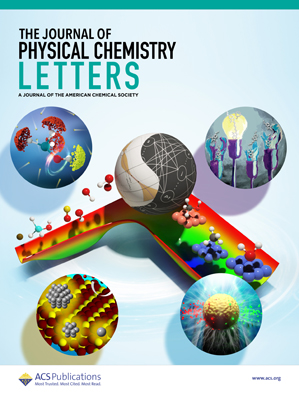为什么GW近似能给出精确的准粒子能量?顶点校正的消去量化
IF 4.6
2区 化学
Q2 CHEMISTRY, PHYSICAL
引用次数: 0
摘要
Hedin对电子自能的GW近似在计算准粒子能量方面取得了令人印象深刻的成功,例如电离势、电子亲和力或电子能带结构。这个相当简单的近似之所以成功,是因为取消了超出GW近似的所谓顶点修正。这种说法主要是基于过去在粗糙的局部密度近似中使用顶点修正的计算。在这里,我们利用一阶近似或对所有阶的无限求和,探讨了在极化率和自能量方面的各种非局部顶点修正。特别是,我们使用基于静态筛选交互的顶点,就像在Bethe-Salpeter方程中一样。我们在实际的分子系统中证明,赫丁方程中的两个顶点本质上是补偿的。我们进一步表明,两个顶点之间的一致性对于获得真实的电子性质至关重要。最后,我们考虑越来越大的集群,并推断我们关于两个顶点补偿的结论将适用于扩展系统。本文章由计算机程序翻译,如有差异,请以英文原文为准。

Why Does the GW Approximation Give Accurate Quasiparticle Energies? The Cancellation of Vertex Corrections Quantified
Hedin’s GW approximation to the electronic self-energy has been impressively successful in calculating quasiparticle energies, such as ionization potentials, electron affinities, or electronic band structures. The success of this fairly simple approximation has been ascribed to the cancellation of the so-called vertex corrections that go beyond the GW approximation. This claim is mostly based on past calculations using vertex corrections within the crude local-density approximation. Here, we explore a wide variety of nonlocal vertex corrections in the polarizability and the self-energy, using first-order approximations or infinite summations to all orders. In particular, we use vertices based on statically screened interactions like in the Bethe–Salpeter equation. We demonstrate on realistic molecular systems that the two vertices in Hedin’s equation essentially compensate. We further show that consistency between the two vertices is crucial for obtaining realistic electronic properties. We finally consider increasingly large clusters and extrapolate that our conclusions about the compensation of the two vertices would hold for extended systems.
求助全文
通过发布文献求助,成功后即可免费获取论文全文。
去求助
来源期刊

The Journal of Physical Chemistry Letters
CHEMISTRY, PHYSICAL-NANOSCIENCE & NANOTECHNOLOGY
CiteScore
9.60
自引率
7.00%
发文量
1519
审稿时长
1.6 months
期刊介绍:
The Journal of Physical Chemistry (JPC) Letters is devoted to reporting new and original experimental and theoretical basic research of interest to physical chemists, biophysical chemists, chemical physicists, physicists, material scientists, and engineers. An important criterion for acceptance is that the paper reports a significant scientific advance and/or physical insight such that rapid publication is essential. Two issues of JPC Letters are published each month.
 求助内容:
求助内容: 应助结果提醒方式:
应助结果提醒方式:


